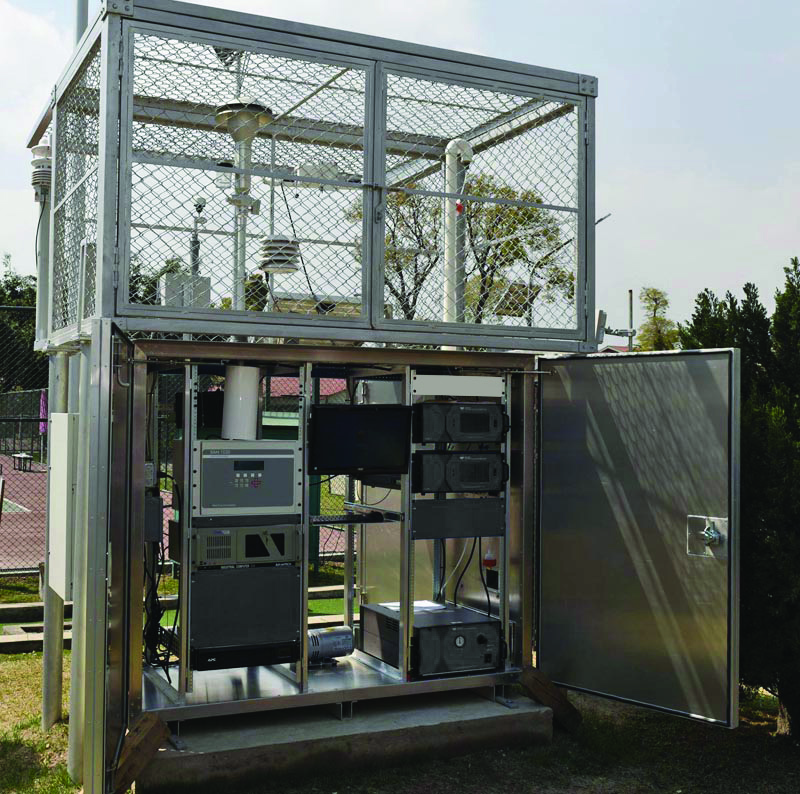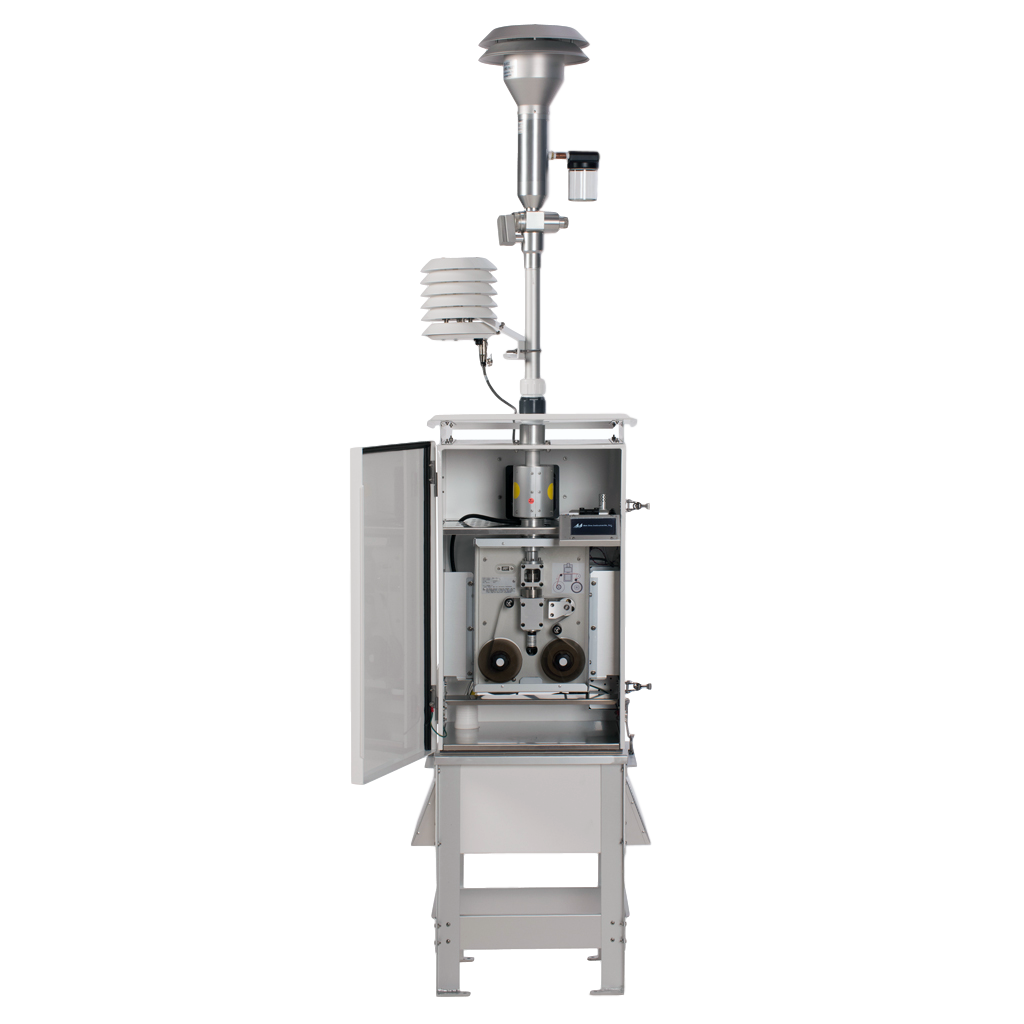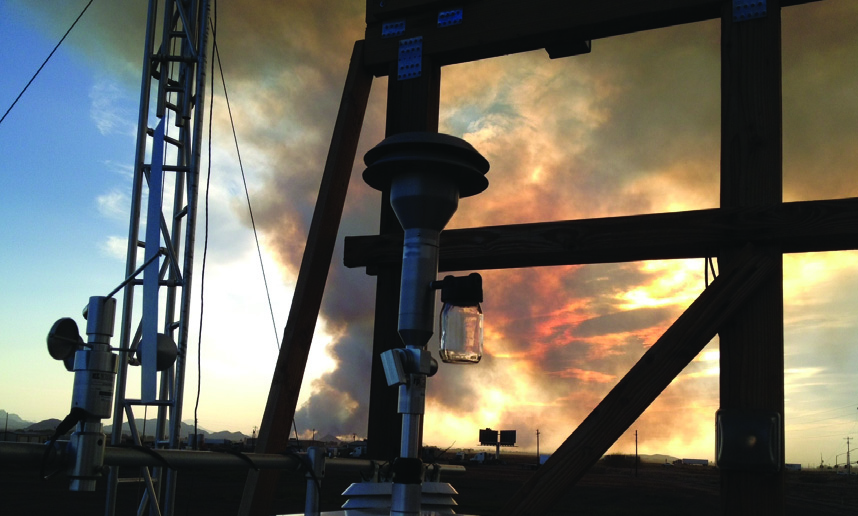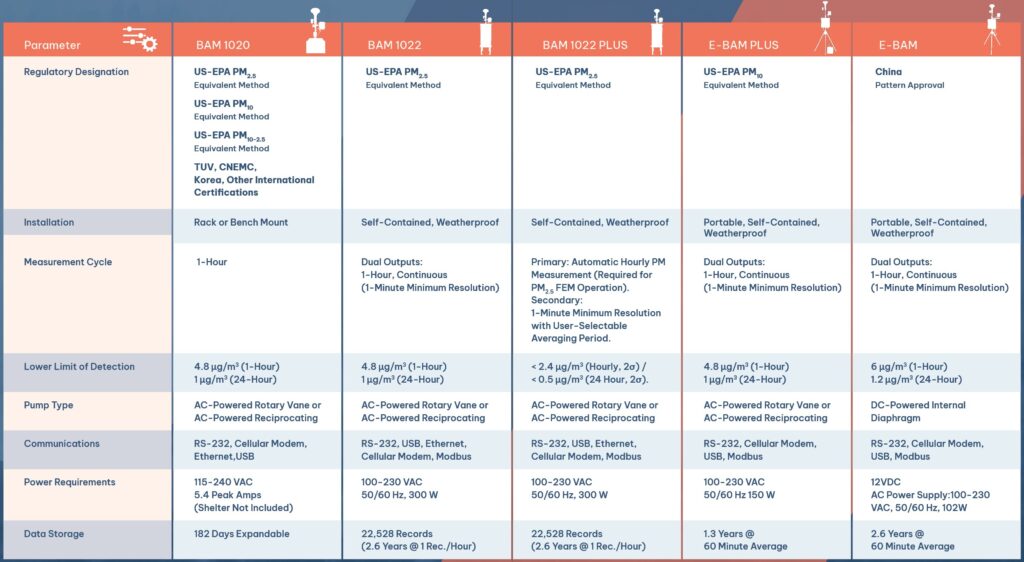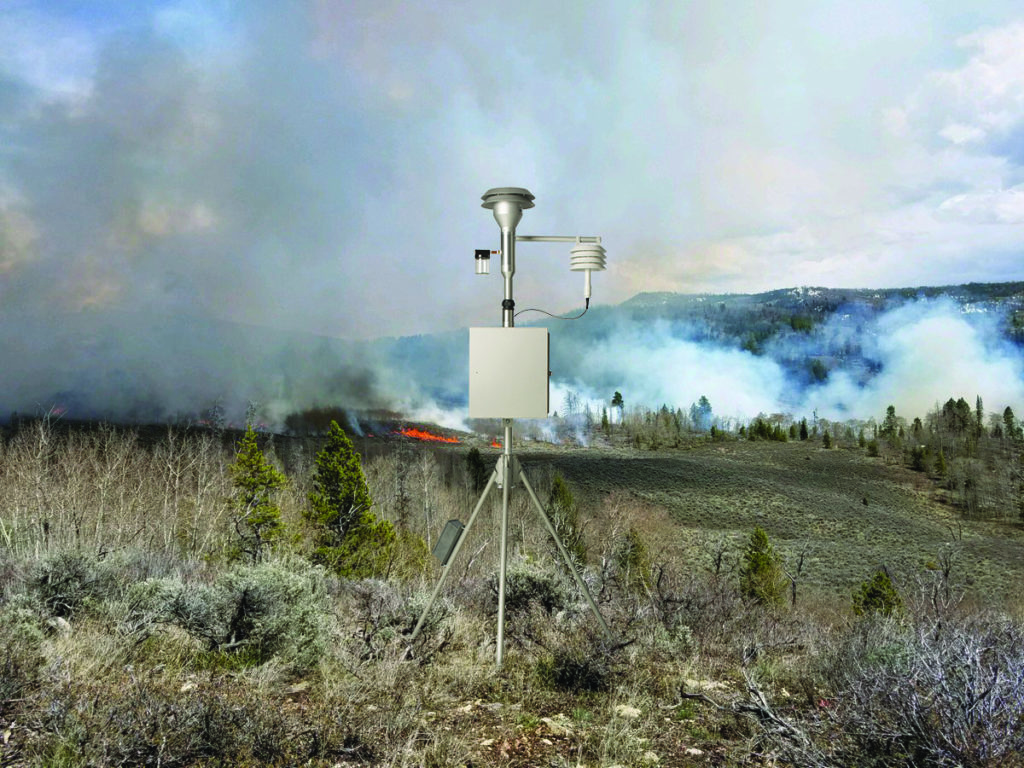What are Beta Attenuation Mass Monitors?
Beta Attenuation Mass Monitors, “BAMs,” are regarded as the standard for continuous ambient particulate mass measurement in air quality monitoring because of their simplicity, reliability, and unsurpassed accuracy. Almost all large air quality monitoring networks worldwide use BAMs for this reason. Because of their uncompromising accuracy and ease of use, BAMs are used in Air Quality Monitoring Networks, Emergency Responder applications, Community and Fenceline Monitoring applications, and Roadside Monitoring.
Beta Attenuation
Beta attenuation is the most widely used method worldwide for regulatory monitoring of particulate matter. Over the past decade, BAMs have largely supplanted other methods such as the “TEOM” because they are generally more reliable, less complex, and less expensive to operate. Here's a quick overview of the principle of operation of beta attenuation mass monitors:
“When the high-energy electrons emanating from the radioactive decay of 14C (carbon-14) interact with nearby matter, they lose their energy and, in some cases, are absorbed by the matter. These high-energy electrons emitted through radioactive decay are known as beta rays, and the process is known as beta ray attenuation. When matter is placed between the radioactive 14C source and a device designed to detect beta rays, the beta rays are attenuated. This results in a reduction in the number of beta particles detected. The magnitude of the reduction in detected beta particles is a function of the mass of the absorbing matter between the 14C beta source and the detector, which for the BAM-1020 is a photomultiplier tube with a scintillation device.” – Dr. David Gobeli, PhD
BAM 1020 Beta Attenuation Mass Monitor
The BAM 1020 beta attenuation mass monitor is the defacto US standard for continuous PM monitoring and is the flagship of MOI product line. It was first introduced in 1995, received EPA designation for PM10 in 1998, EPA designation for PM2.5 in 2008 (almost 2 years ahead of the competition), and EPA designation for PM10-2.5 in 2009. It possesses over a dozen international certifications, including CNEMC (China), TUV (EU), Korea, Taiwan, and Russia.
Features of the BAM 1020 include:
• US-EPA Designated PM10, PM2.5, & PM10-2.5
• Certified in China, Korea, EU, Russia
• Rack-mounted or benchtop
• 3rd generation
• Time-proven technology
• Gravimetrically-traceable calibration
• Cloud modem compatible
• Ideal for air quality monitoring networks & roadside monitoring
BAM 1022 & BAM 1022 PLUS Portable Beta Attenuation Mass Monitors
The BAM 1022 and BAM 1022 PLUS represent the future of regulatory air quality monitoring. It is self-contained; no shelter or enclosure is required. This relieves the user of having to appropriate the space, the power, the expense, and the hassle of setting up an environmentally controlled shelter on-site to perform a simple PM measurement. Unlike most air quality monitors, which are generally set up and perform their measurements at or near room temperature inside a shelter or enclosure, the BAM-1022 performs its measurement under near ambient conditions. This approach can improve the accuracy of the measurement.
Features of the BAM 1022 and BAM 1022 PLUS Include:
• US-EPA Designated PM2.5
• Lightweight, portable
• Self-contained: no shelter/enclosure necessary
• Simultaneous 1-hour and real-time output
• Time-proven technology
• Gravimetrically-traceable calibration
• Cloud modem compatible
• Ideal for Air quality monitoring networks, Roadside monitoring, Emergency responder applications, & Community monitoring
• Ideal field audit device
E-BAM PLUS Portable Environmental Beta-Attenuation Mass Monitor
The Met One Instruments, Inc. E-BAM Plus is a portable, real-time beta gauge with EPA Approval for PM10 particulate measurements. The E-BAM Plus will satisfy users, regulators, and Public Health officials by providing truly accurate, precise, real-time measurements of fine particulate matter automatically. It is a rugged, portable, battery-operated package easily deployed and operational in 15 minutes.
Features of the E-BAM Plus Include:
- US-EPA Designated PM10
- Lightweight & Portable
- Self-contained, no shelter or enclosure required
- Simultaneous 1-hour and real-time output
- Time-proven technology
- Gravimetrically-traceable calibration
- Cloud modem compatible
- Ideal for air quality monitoring networks, roadside monitoring, emergency responder applications, and community monitoring
- Ideal field-audit device
E-BAM Portable Environmental Beta-Attenuation Mass Monitor
The Met One Instruments, Inc. E-BAM is in a class of its own as a portable, real-time beta gauge comparable to U.S. EPA methods for PM2.5 and PM10 particulate measurements. The E-BAM has been built to satisfy Emergency Responders, regulators, Industrial Hygienists, and Public Health officials by providing truly accurate, precise, real-time measurements of fine particulate matter. It is rugged, portable, battery-operated, and deployable in 15 minutes.
Features of the E-BAM include:
- Easily operated from battery or solar power
- Lightweight & Portable
- Self-contained, no shelter or enclosure required
- Simultaneous 1-hour and real-time output, with 1-minute time resolution
- Time-proven technology
- Gravimetrically-traceable calibration
- Cloud modem compatible
- Ideal for roadside monitoring, emergency responder applications, and community monitoring
BAM Products Specification Comparison Chart
Unparalleled Accuracy, Trustworthy Results
Beta gauges provide unparalleled accuracy in measuring PM worldwide. Unlike other methods such as optical techniques, Beta gauges are sensitive only to PM mass and not to unmeasurable and unknowable factors such as the chemical composition and physical nature of the aerosol being measured. These factors impact optical methods for PM measurement, and since they cannot be known ahead of time, they must make assumptions, which are not always correct. This is especially true during extraordinary events such as wildfires, structure fires, industrial accidents, or other instances where there is a heightened need to measure PM concentrations accurately.
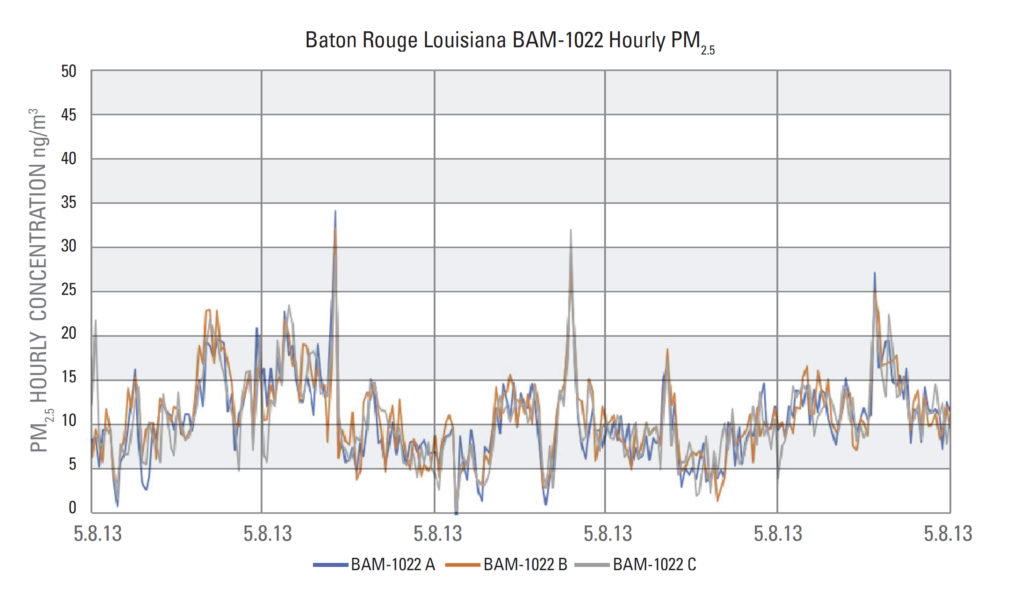
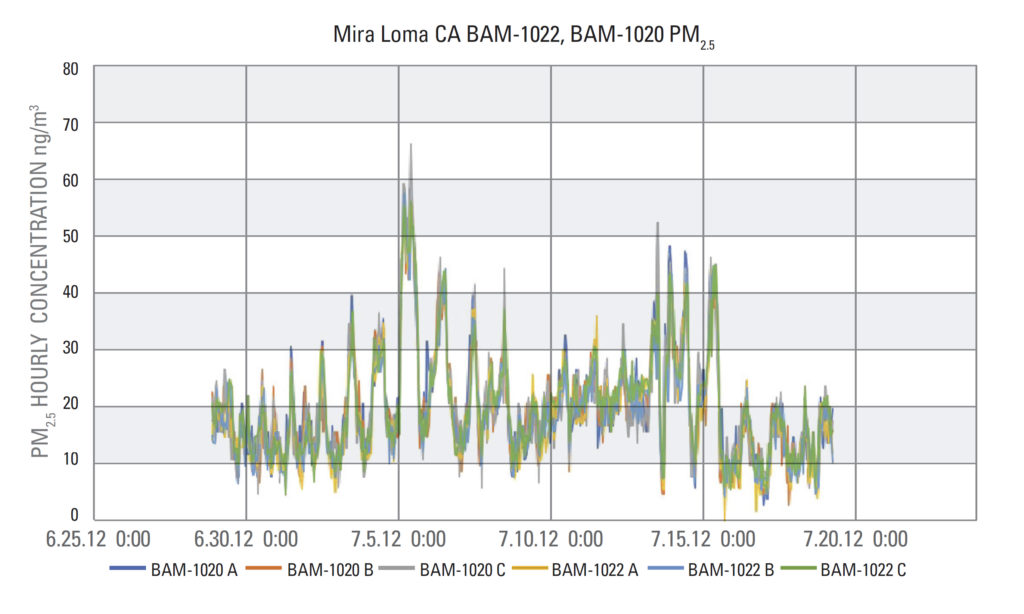
Reliability and Ease of Operation
BAMs are easy to operate and easy to maintain. The equipment is simple and not overly complex, unlike PM monitors based on the TEOM technology, which employ multiple flow splitters, flow controllers, valves, and NAFION dryers. The more complex the measurement, the more opportunity for something to go wrong.
Gravimetric Calibration
Met One BAMs are calibrated to a gravimetric standard. In other words, when you run one of our BAMs against a reference sampler, such as our E-SEQ-FRM or our E-FRM, you can be confident that the results will match. Light-based “spectrometers” can make no such claim as there is direct traceability to mass. Instead, they estimate the chemical aerosol composition of the air and estimate a conversion factor between light signal and particle mass. When the aerosol composition becomes unexpected, such as might occur during forest fires, industrial accidents, or perhaps even when the prevailing wind direction changes, they can be spectacularly wrong – not just slightly off.
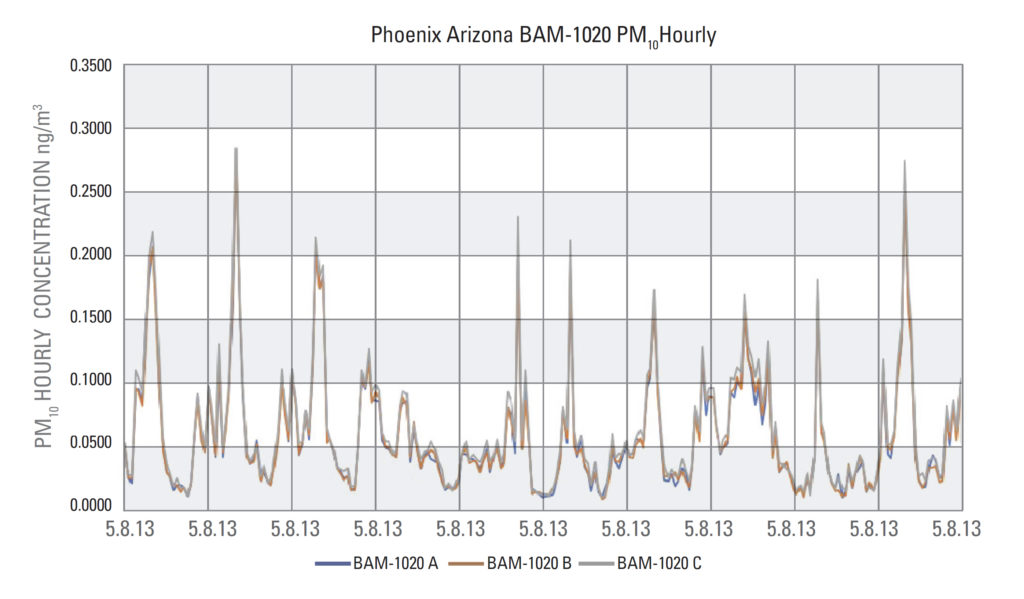
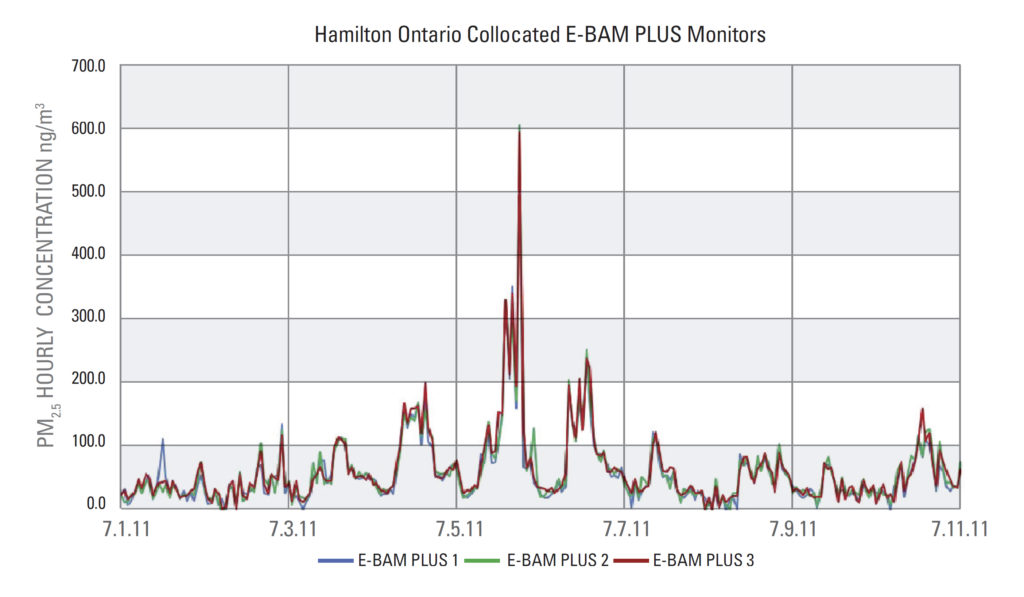
Government Certified Air Quality Monitoring Networks
The vast majority of PM monitors used in governmental air quality monitoring networks are BAMs. PM monitors used in these networks generally require government certification for PM10 or PM2.5. The BAM 1020, BAM 1022, BAM 1022 PLUS, and E-BAM Plus monitors are government certified for operation in such networks.
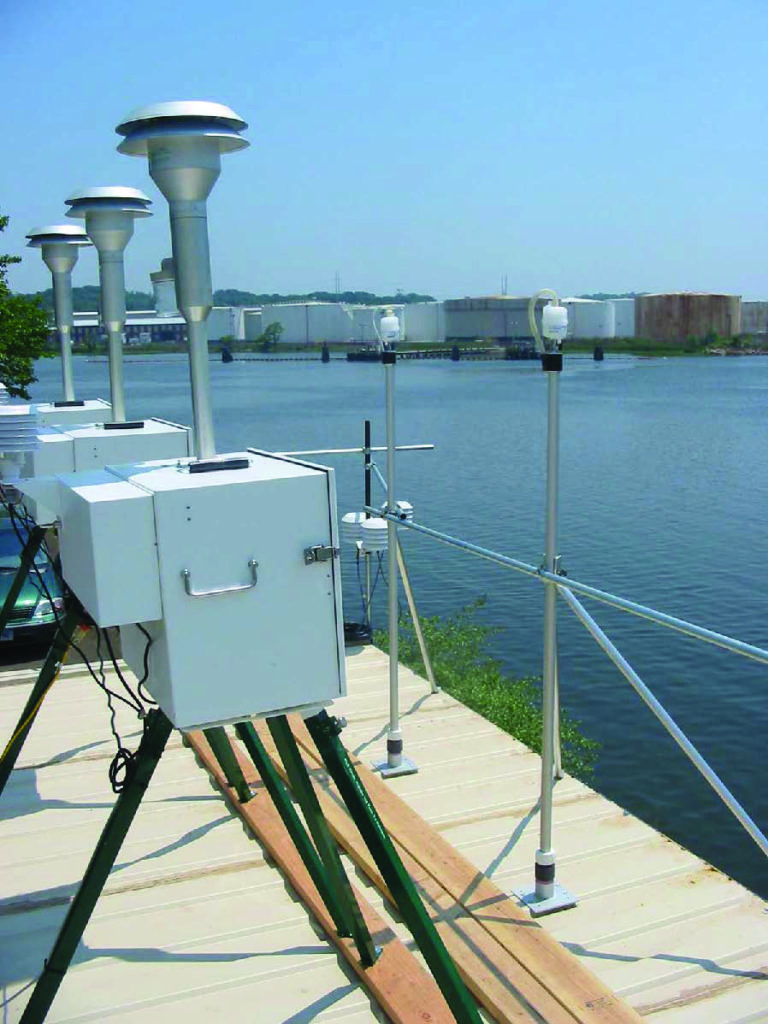
Emergency Responder Applications
Forest fires, structure fires, or industrial accidents can lead to the release of massive amounts of particulate matter into the air, thereby imperiling the health of residents and emergency responders. Because of the unplanned nature of such events, it is often impossible to set up air quality monitoring equipment to accurately assess health threats to the surrounding community. The E-BAM is the only portable beta gauge available that may be easily and economically operated on battery or solar power. If EPA-designated measurements are required, either the BAM-1022, BAM 1022 PLUS, or the E-BAM PLUS may be quickly and easily deployed.
Community & Fenceline Monitoring: Identify Fugitive Emissions & Local Sources
Communities close to stationary emission sources such as petroleum refineries, petrochemical plants, waste incineration facilities, or ports may be subjected to pollutant levels higher than is seen at air quality monitoring stations located in the surrounding areas. A portable carbon monitor could be useful in identifying fugitive emissions and easily identifying local sources of pollution.
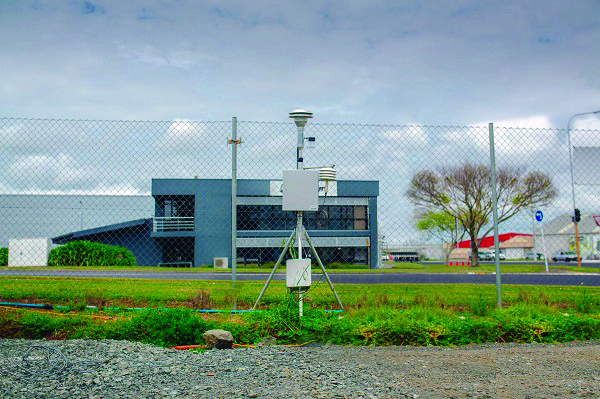
Roadside Monitoring
Often there is an interest in monitoring mobile-source emissions originating from motor vehicle exhaust near heavily traveled roadways. It is generally important to measure only BC for these applications, which suggests multi-wavelength carbon monitors might not be cost-effective. In addition, at such sites often external power is limited, thereby making the deployment of air quality monitors requiring an environmental shelter impractical. For these applications, the BC-1060 could track in real-time BC levels in a convenient, cost-effective manner.

Curious to Learn More?
🔗 Let us teach you How to Calculate AQI and NowCast Indices utilizing a case study of the BAM 1020 during the 2018 Wildfire Season
🔗 Learn about how the EPA tests low-cost sensors with the BAM 1020: MAY 2021 – EPA REPORT TESTS NEW AIR POLLUTION PARTICLE SENSORS VS. MET ONE INSTRUMENTS, INC. BAM 1020 FEM PM2.5
🔗 Read our first article in a new series about how Wildfires affect air quality, called “Global Wildfire, Air Quality, & Public Health Information 2021”
🔗 Learn more about Regulatory Monitoring here.
🔗 Learn more about Community & Fenceline Monitoring here.
🔗 Learn more about air quality monitoring during Emergency Response events here.


